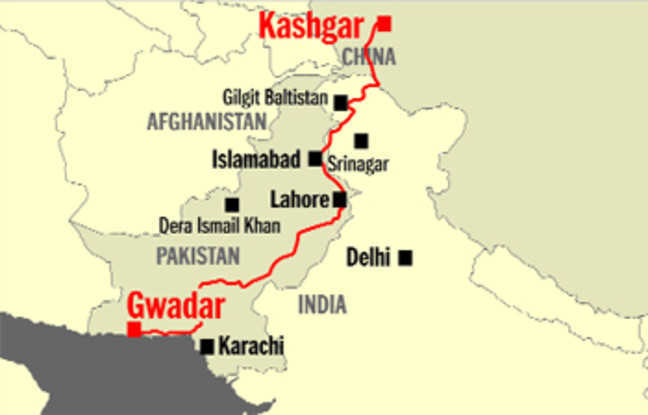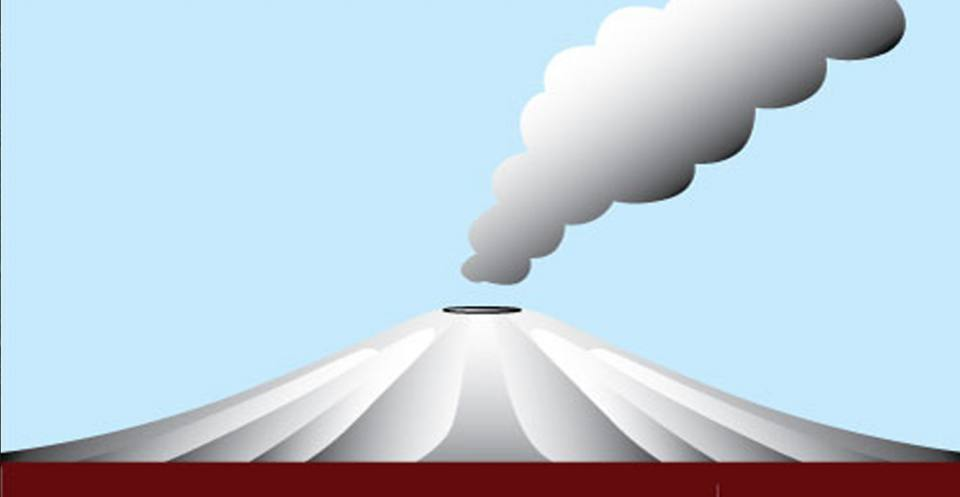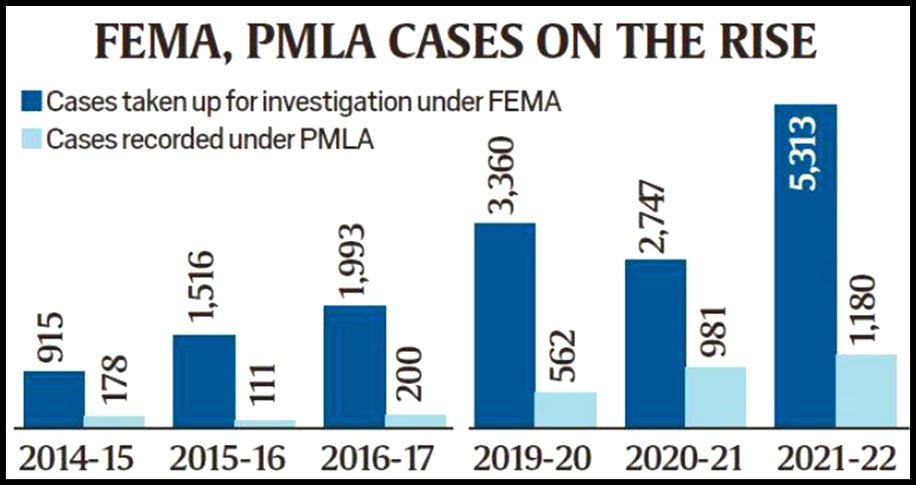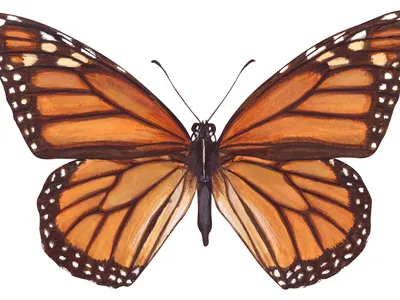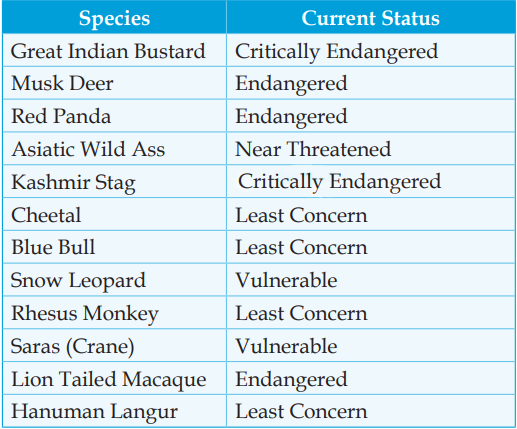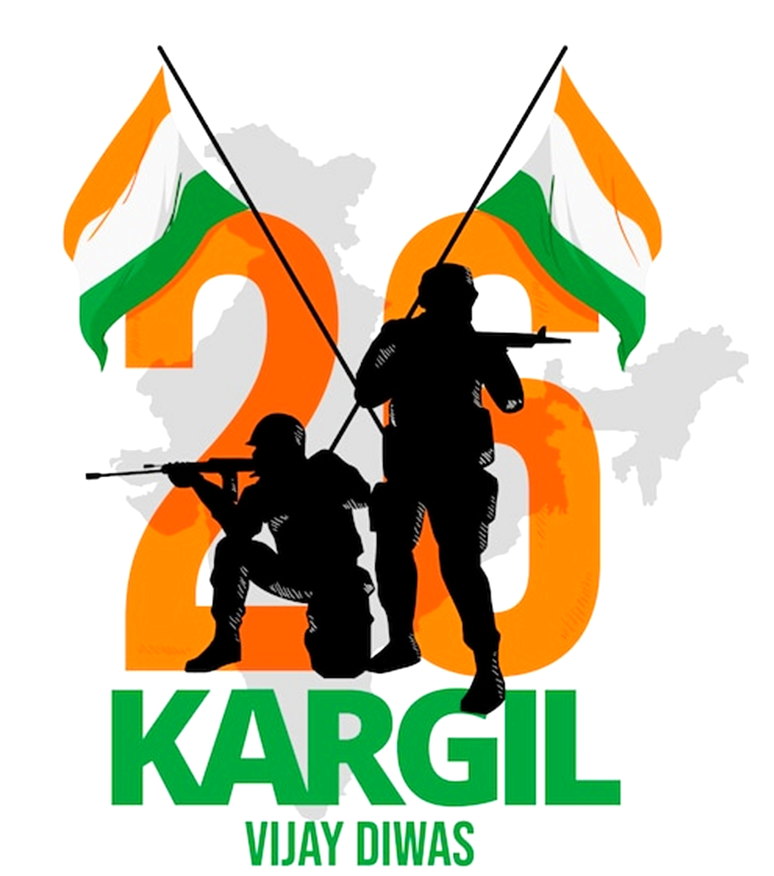Governance
Street Vendors
For Prelims: National Association of Street Vendors of India, SVANidhi, Fundamental Rights, DPSP, The Street Vendors Act
For Mains: Significance of Informal Economy, Challenges faced by Street Vendors, Measures to be taken, Related Government Initiatives
Why in News?
Recently, the Minister for Housing and Urban Affairs addressed the 6th meeting of National Association of Street Vendors of India (NASVI) with the theme as “From Encroachers to Self-Employed”.
Who do we need to know about Street Vendors?
- About:
- Street Vendor is a person who offers goods for sale to the public at large without having a permanent built-up structure from which to sell.
- Street vendors may be stationary in the sense that they occupy space on the pavements or other public/priv.ate spaces or, they may be mobile in the sense that move from place to place by carrying their wares on push carts or in baskets on their heads.
- Population:
- There is a substantial increase in the number of street vendors in the major cities around the world, especially in the developing countries of Asia, Latin America and Africa.
- Around 49.48 lakh street vendors have been identified in India.
- Uttar Pradesh has the maximum at 8.49 lakh, followed by Madhya Pradesh at 7.04 lakh.
- Delhi has only 72,457 street vendors.
- No street vendor has been identified in Sikkim.
- Constitutional Provisions:
- Right to Trade:
- Article 19 (1) (g) gives the Indian citizen a fundamental right to practice any profession, or to carry on any occupation, trade or business.
- Equality Before Law:
- Article 14 of the Constitution states that the state shall not deny to any person equality before the law or equal protection of the laws within the territory of India.
- Social Justice:
- The preamble of the Indian Constitution states that India is a sovereign, socialist, secular democratic republic and shall secure to its citizens justice, social, economic and political and equality of status and of opportunity.
- Directive Principles:
- Article 38(1) directs the state to promote the welfare of the people by securing a social order in which justice – social, economic and political, shall inform all institutions of national life.
- Article 38(2) directs to ‘minimize the inequalities in income status, facilities and opportunities.’
- Article 39(a) directs the state to formulate policy to ensure that citizens, men and women equally, have the right to an adequate means of livelihood.
- Article 41 specifically provides for ‘right to work’ within the limits of the economic capacity of the state.
- Right to Trade:
Why is there a rise in Street Vendors?
- Firstly, lack of gainful employment coupled with poverty in rural areas has pushed people out of their villages in search of a better existence in the cities.
- These migrants do not possess the skills or the education to enable them to find better paid, secure employment in the formal sector and they have to settle for work in the informal sector.
- Secondly, there is another section of the population in these countries who are forced to join the informal sector.
- These are workers who were employed in the formal sector.
- They lost their jobs because of closures, down-sizing or mergers in the industries they worked in and they or their family members had to seek low paid work in the informal sector in order to survive.
- These are workers who were employed in the formal sector.
What are the Challenges faced by Street Vendors?
- Lack of Space:
- Master plans prepared for our cities do not allocate space to vendors/hawkers, as planners blindly imitate the western concept of marketing, ignoring Indian traditions.
- Tackle Multiple Authorities:
- The vendors have to deal with multiple authorities – the municipal corporation, police (thana as well as traffic), regional development authorities, district administration, local panchayats and so on.
- This leads to exploitation and extortion.
- In many cases the positive steps taken by one authority are nullified by the actions of others.
- Instead of regulating vendors, municipal corporations treat them as a nuisance and an irritant, their policies and actions are aimed more at removing and harassing them rather than at regulation.
- The vendors have to deal with multiple authorities – the municipal corporation, police (thana as well as traffic), regional development authorities, district administration, local panchayats and so on.
- Frequent Eviction:
- The regular eviction carried out by the district or municipal administration.
- They fear the very sight of the eviction team which is known locally by different names.
- The regular eviction carried out by the district or municipal administration.
- Extortion Racket:
- Cases of ‘rangdari tax’ and ‘hafta’ are common.
- In many cities vendors have to part with substantial money in order to ply their trade.
- Cases of ‘rangdari tax’ and ‘hafta’ are common.
What are Government’s Initiatives for Street Vendors?
- SVANidhi Scheme:
- SVANidhi Scheme was launched to benefit over 50 lakh street vendors who had been vending in urban areas including those from surrounding peri-urban/rural areas.
- It also aims to promote digital transactions through cash-back incentives up to an amount of Rs. 1,200 per annum.
- National Association of Street Vendors of India:
- NASVI is an organization working for the protection of the livelihood rights of thousands of street vendors across the country.
- The main objective was to bring together the street vendor organizations in India so as to collectively struggle for macro-level changes.
- The Street Vendors (Protection of Livelihood and Regulation of Street Vending) Act, 2014:
- It was enacted to regulate street vendors in public areas and protect their rights.
- The Act defines a “street vendor” as a person engaged in vending of articles of everyday use or offering services to the general public, in any public place or private area, from a temporary built-up structure or by moving from place to place.
Way Forward
- Despite multiple schemes running for the street vendors, there are various gaps in implementation, identification, awareness and accessibility of various schemes which should be plugged in a timely manner.
- Benefits like maternity allowances, accident relief, natural death compensation, education support for children for higher studies, pension during any crisis should be provided to them.
- States should be asked to ensure that street vendors are not harassed by the authorities, as all they are asking is a right to livelihood.
UPSC Civil Services Examination, Previous Year Questions (PYQs)
Q. How has globalization led to the reduction of employment in the formal sector of the Indian economy? Is increased informalization detrimental to the development of the country? (2016)


Biodiversity & Environment
Climate Finance
For Prelims: Climate Finance, COP 26, Kyoto Protocol, Paris Agreement, United Nations Framework Convention on Climate Change (UNFCCC), Green Climate Fund (GCF)
For Mains: Climate Finance and its Significance
Why in News?
Recently, the UNFCCC COP26 President, Alok Sharma, visited India to discuss India’s implementation of its COP 26 commitments.
- He also stated that a mechanism is being put in place to achieve the target of climate financing USD 100 billion by 2023.
What is Climate Finance?
- About:
- It refers to local, national, or transnational financing—drawn from public, private and alternative sources of financing—that seeks to support mitigation and adaptation actions that will address climate change.
- The UNFCCC, Kyoto Protocol, and the Paris Agreement call for financial assistance from Parties with more financial resources (Developed Countries) to those that are less endowed and more vulnerable (Developing Countries).
- This is in accordance with the principle of “Common but Differentiated Responsibility and Respective Capabilities” (CBDR).
- In COP26, new financial pledges to support developing countries in achieving the global goal for adapting to the effects of climate change were made.
- New rules for the international carbon trading mechanisms agreed at COP26 will support adaptation funding.
- Significance:
- Climate finance is needed for mitigation because large-scale investments are required to significantly reduce emissions.
- Climate finance is equally important for adaptation, as significant financial resources are needed to adapt to the adverse effects and reduce the impacts of a changing climate.
- Climate Financing recognizes that the contribution of countries to climate change and their capacity to prevent it and cope with its consequences vary enormously.
- Hence, developed countries should also continue to take the lead in mobilizing climate finance through a variety of actions, including supporting country-driven strategies and taking into account the needs and priorities of developing country Parties.
- Climate finance is critical to tackle the issues posed by climate change and achieve the goal of limiting the rise in the earth’s average temperature to below 2 degrees Celsius over pre-industrial levels, something the 2018 IPCC report has predicted.
What is the USD 100 Billion Target and why does it matter?
- In 2009, at the UNFCCC COP15 (held in Copenhagen),
- The developed country parties, to achieve meaningful mitigation actions and transparency on implementation, jointly set a target of USD 100 billion a year by 2020 to address the needs of developing countries.
- The climate finance goal was then formally recognized by the UNFCCC Conference of the Parties at COP16 in Cancun.
- At COP21 in Paris, Parties extended the $100 billion goals through 2025.
- After COP26 there was a consensus that developed nations will double their collective provision of adaptation finance from 2019 levels by 2025, in order to achieve this balance between adaptation and mitigation.
What is Green Financing?
- To assist the provision of climate financing, UNFCCC established a financial framework to give financial resources to developing nation Parties.
- The finance structure also supports the Kyoto Protocol and the Paris Agreement.
- It specifies that the financial mechanism's operation can be entrusted to one or more existing international entities, since the Convention's entrance into force in 1994, the Global Environment Facility (GEF) has acted as the financial mechanism's operating institution.
- Parties established the Green Climate Fund (GCF) at COP 16 in 2010 and designated it as an operating entity of the financial mechanism in 2011.
- The financial mechanism reports to the COP, which determines its policies, programme priorities, and financing eligibility criteria.
- Other Funds:
- In addition to providing guidance to the GEF and the GCF, Parties have established two special funds—
- Special Climate Change Fund (SCCF)
- Least Developed Countries Fund (LDCF),
- Both are managed by the GEF—and the Adaptation Fund (AF) established under the Kyoto Protocol in 2001.
- At the Paris Climate Change Conference in 2015, the Parties agreed that the operating entities of the financial mechanisms – GCD, GEF, SCCF and the LDCF, shall serve the Paris Agreement.
- In addition to providing guidance to the GEF and the GCF, Parties have established two special funds—
What are India’s Initiatives regarding Climate Finance?
- National Adaptation Fund for Climate Change (NAFCC):
- It was established in 2015 to meet the cost of adaptation to climate change for the State and Union Territories of India that are particularly vulnerable to the adverse effects of climate change.
- National Clean Energy Fund:
- The Fund was created to promote clean energy, and funded through an initial carbon tax on the use of coal by industries.
- It is governed by an Inter-Ministerial Group with the Finance Secretary as the Chairman.
- Its mandate is to fund research and development of innovative clean energy technology in the fossil and non-fossil fuel-based sectors.
- National Adaptation Fund:
- The fund was established in 2014 with a corpus of Rs. 100 crores with the aim of bridging the gap between the need and the available funds.
- The fund is operated under the Ministry of Environment, Forests, and Climate Change (MoEF&CC).
Way Forward
- Developed countries must assist and work with developing nations to help them make clean energy transitions and get financing for climate resilient infrastructure, thus, ensuring that the former delivered on the $100-billion goal.
- Further, there is a need to sustain a political commitment to raising new finance, besides,
- Ensuring that finance is better targeted at reducing emissions and vulnerability.
- Learning and improving from recent experiences, particularly as the Green Climate Fund gets to work.
UPSC Civil Services Examination Previous Year Question (PYQ)
Prelims
Q.With reference to the Agreement at the UNFCCC Meeting in Paris in 2015, which of the following statements is/are correct? (2016)
- The Agreement was signed by all the member countries of the UN, and it will go into effect in 2017.
- The Agreement aims to limit the greenhouse gas emissions so that the rise in average global temperature by the end of this century does not exceed 2ºC or even 1.5ºC above pre-industrial levels.
- Developed countries acknowledged their historical responsibility in global warming and committed to donate $ 1000 billion a year from 2020 to help developing countries to cope with climate change.
Select the correct answer using the code given below:
(a) 1 and 3 only
(b) 2 only
(c) 2 and 3 only
(d) 1, 2 and 3
Ans: (b)
EXP:
- The Paris Agreement was adopted in December 2015 at COP21 in Paris, France by the Conference of the Parties (COP) to the United Nations Framework Convention on Climate Change (UNFCCC).
- The Agreement aims to limit the greenhouse gas emissions so that the rise in average global temperature by the end of this century does not exceed 2°C or even 1.5°C above pre-industrial levels. Hence, statement 2 is correct.
- The Paris Agreement entered into force on 4 November 2016, thirty days after the date on which at least 55 Parties to the Convention accounting in total for at least an estimated 55 % of the total global greenhouse gas emissions had deposited their instruments of ratification, acceptance, approval or accession with the depositary. Hence, statement 1 is not correct.
- Additionally, the agreement aims to strengthen the ability of countries to deal with the impacts of climate change, in line with their own national objectives.
- The Paris Agreement requires all Parties to put forward their best efforts through Nationally Determined Contributions (NDCs) and to strengthen these efforts in the years ahead. This includes requirement that all Parties report regularly on their emissions and on their implementation efforts.
- There will also be a global stocktake every 5 years to assess the collective progress towards achieving the purpose of the Agreement and to inform further individual actions by the Parties.
- Through the Cancun Agreements in 2010 developed country Parties committed to a goal of mobilizing jointly USD 100 billion per year by 2020 to address the needs of developing countries.
- Further, they also agreed that prior to 2025 the Conference of the Parties serving as the meeting of the Parties to the Paris Agreement shall set a new collective quantified goal from a floor of USD 100 billion per year. Hence, statement 3 is not correct. Therefore, option (b) is the correct answer.
Mains
Q. Describe the major outcomes of the 26th session of the Conference of the Parties (COP) to the United Nations Framework Convention on Climate Change (UNFCCC). What are the commitments made by India in this conference? (2021)


International Relations
China Pakistan Economic Corridor (CPEC)
For Prelims: China-Pakistan Economic Corridor (CPEC), One Belt One Road (OBOR), Blue dot Network
For Mains: China-Pakistan Economic Corridor (CPEC) and its implications on India
Why in News?
Recently, Pakistan and China decided to welcome any third country joining the multi-billion dollar China-Pakistan Economic Corridor (CPEC).
- In context to Afghanistan, it had broken new ground in strengthening international and regional connectivity.
- Earlier, Pakistan signed a new agreement with China to begin the second phase of the USD 60 billion China-Pakistan Economic Corridor (CPEC).
What is CPEC?
- CPEC is a 3,000-km long route of infrastructure projects connecting China’s northwest Xinjiang Uygur Autonomous Region and the Gwadar Port in the western province of Balochistan in Pakistan.
- It is a bilateral project between Pakistan and China, intended to promote connectivity across Pakistan with a network of highways, railways, and pipelines accompanied by energy, industrial, and other infrastructure development projects.
- It will pave the way for China to access the Middle East and Africa from Gwadar Port, enabling China to access the Indian Ocean and in return China will support development projects in Pakistan to overcome the latter’s energy crises and stabilising its faltering economy.
- CPEC is a part of the Belt and Road Initiative.
- The BRI, launched in 2013, aims to link Southeast Asia, Central Asia, the Gulf region, Africa and Europe with a network of land and sea routes.
What are CPEC’s Implications for India?
- India’s Sovereignty: India has continuously opposed the project since it passes through the Pakistan-occupied Kashmir territory of Gilgit-Baltistan – a claim opposed by Pakistan.
- The corridor is also perceived to be an alternative economic road link for the Kashmir Valley lying on the Indian side of the border.
- Most key players in the Indian state of Jammu and Kashmir, have expressed optimism about the project.
- There have been calls by local business and political leaders to declare Kashmir on both sides of the Line of Control (LoC) a ‘Special Economic Zone’.
- However, a well-connected Gilgit-Baltistan that attracts industrial development and foreign investment, if CPEC proves a success, will further consolidate the region’s perception as internationally recognised Pakistani territory, diminishing India’s claim over the 73,000 sq km piece of land which is home to more than 1.8 million people.
- Chinese Control Over Trade Via Sea: Major US ports on the East Coast depend on the Panama Canal to trade with China.
- Once CPEC becomes fully functional, China will be in a position to offer a ‘shorter and more economical’ trade route (avoiding travel through the entire Western Hemisphere) to most North and Latin American enterprises.
- This will give China the power to dictate the terms by which the international movement of goods will take place between the Atlantic and the Pacific oceans.
- Chinese String of Pearls: China has been increasing its presence in the Indian Ocean with the ‘String of Pearls’ ambition: A term coined by the Americans and often used by Indian defence analysts to refer to a Chinese game-plan of encircling India through a network of airfields and ports.
- With an existing presence in Chittagong port (Bangladesh), Hambantota port (Sri Lanka), Port Sudan (Sudan), Maldives, Somalia and Seychelles, a control of Gwadar port establishes complete dominance of the Indian ocean by the Communist nation.
- Emergence of Pakistan as an Outsourcing Destination: It is poised to speed up Pakistan’s economic progress.
- Pakistani exports, mainly in the textile and construction material industry, compete directly with those of India in the US and UAE – two of the top three trading partners of both countries.
- With the supply of raw material from China becoming easier, Pakistan will be suitably placed to become a regional market leader in these sectors – mainly at the cost of Indian export volumes.
- Stronger BRI and Chinese Dominance in Trade Leadership: China’s BRI project that focuses on the trade connectivity between China and the rest of Eurasia through a network of ports, roads and railways has been often seen as China’s plan to dominate the region politically. CPEC is one giant step in the same direction.
- A China that is more accepted and integrated with the rest of the global economy will have a better say in the United Nations and with individual nations, which may prove to be bad news for an India aspiring to acquire a permanent seat at the UN Security Council.
What is One Belt One Road (OBOR)?
- About:
- It is a multi-billion-dollar initiative launched in 2013.
- It aims to link Southeast Asia, Central Asia, the Gulf region, Africa and Europe with a network of land and sea routes.
- It has been launched to undertake big infrastructure projects in the world which in turn would also enhance the global influence of China.
- Structure:
- They contain the following six economic corridors:
- The New Eurasian Land Bridge, which connects Western China to Western Russia
- The China-Mongolia-Russia Corridor, which connects North China to Eastern Russia via Mongolia
- The China-Central Asia-West Asia Corridor, which connects Western China to Turkey via Central and West Asia
- The China-Indochina Peninsula Corridor, which connects Southern China to Singapore via Indo-China
- The China-Pakistan Corridor, which connects South Western China through Pakistan to Arabia Sea routes
- The Bangladesh-China-India-Myanmar Corridor, which connects Southern China to India via Bangladesh and Myanmar
- Additionally, the maritime Silk Road connects coastal China to the Mediterranean via Singapore-Malaysia, the Indian Ocean, the Arabian Sea, and the Strait of Hormuz.
- They contain the following six economic corridors:
Way Forward
- India should leverage its strategic location and further work with like-minded countries to participate in multilateral initiatives like,
- The Asia-Africa Growth Corridor is an India-Japan economic cooperation agreement, it can provide India great strategic benefits and counter China.
- Blue Dot network, which is being promoted by the USA.
- It is a multi-stakeholder initiative to bring together governments, the private sector and civil society to promote high-quality, trusted standards for global infrastructure development.
- It is expected to serve as a globally recognized evaluation and certification system for roads, ports and bridges with a focus on the Indo-Pacific region.
UPSC Civil Services Examination Previous Year Question (PYQ)
Prelims
Q. Belt and Road Initiative’ is sometimes mentioned in the news in the context of the affairs of (2016)
(a) African Union
(b) Brazil
(c) European Union
(d) China
Ans: (d)
Exp:
- Proposed in 2013, the ‘Belt and Road Initiative (BRI)’ is an ambitious programme of China for connecting Asia with Africa and Europe via land and maritime networks.
- The BRI comprises a Silk Road Economic Belt – a trans-continental passage that links China with Southeast Asia, South Asia, Central Asia, Russia and Europe by land – and a 21st century Maritime Silk Road, a sea route connecting China’s coastal regions with Southeast and South Asia, South Pacific, Middle East and Eastern Africa, all the way to Europe. Therefore, option (d) is the correct answer.
Mains
Q. The China-Pakistan Economic Corridor (CPEC) is viewed as a cardinal subset of China’s larger ‘One Belt One Road’ initiative. Give a brief description of CPEC and enumerate the reasons why India has distanced itself from the same. (2018)
Q. China and Pakistan have entered into an agreement for the development of an economic corridor. What threat does this pose for India’s security? Critically examine. (2014)
Q. “China is using its economic relations and positive trade surplus as tools to develop potential military power status in Asia”. In the light of this statement, discuss its impact on India as her neighbour. (2017)
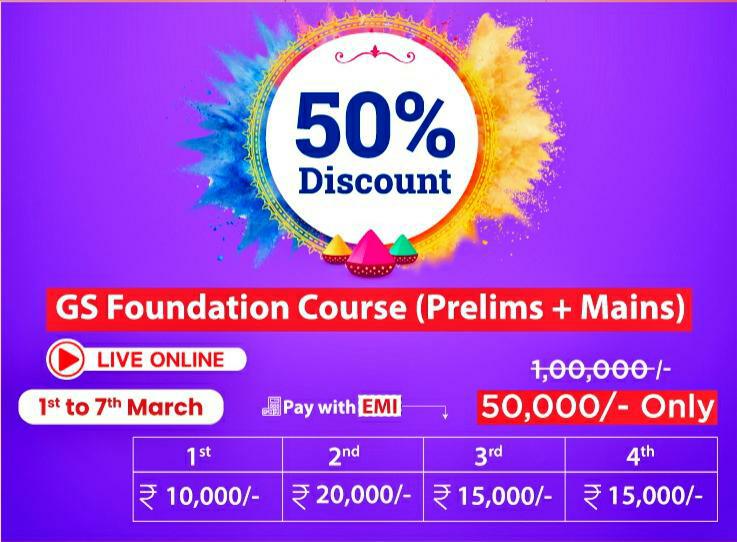
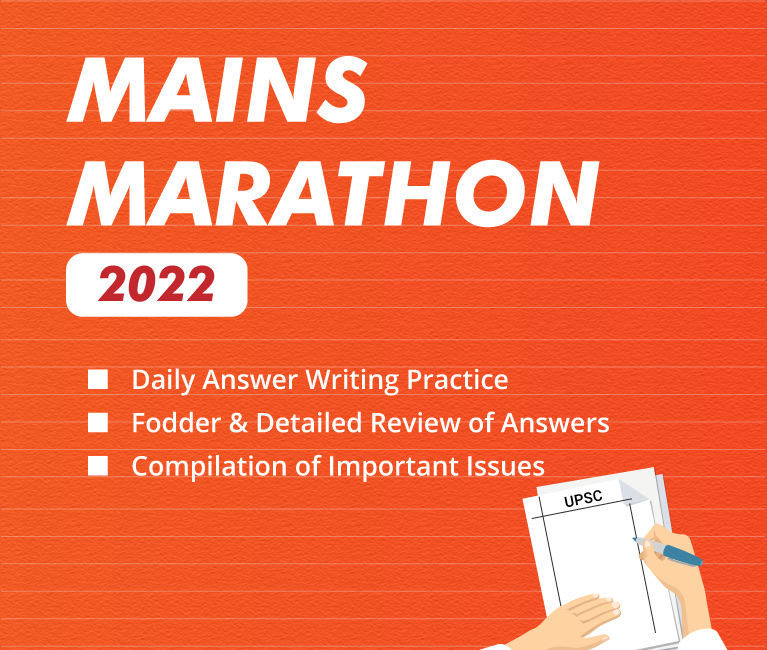
Geography
Sakurajima Volcano Japan
For Prelims: Volcanoes and types
For Mains: Volcanoes and its impacts environment
Why in News?
Recently, the Sakurajima Volcano erupted on Japan’s major western island of Kyushu.
- In 2021, the Fukutoku-Okanoba Submarine Volcano exploded in the Pacific Ocean, off Japan.
What is Sakurajima Volcano?
- Sakurajima is one of Japan’s most active volcanoes and eruptions of varying levels take place on a regular basis.
- It is an active stratovolcano.
- The largest historical eruptions of Sakurajima took place during 1471-76 and in 1914.
- Its eruption has been recorded since the 8th Century.
- Due to its frequent deposition of ash on Kagoshima, and due to its explosive potential, it is considered as one of the very dangerous volcanoes.
What is a Volcano?
- About:
- A volcano is an opening on the surface of a planet or moon that allows material warmer than its surroundings to escape from its interior.
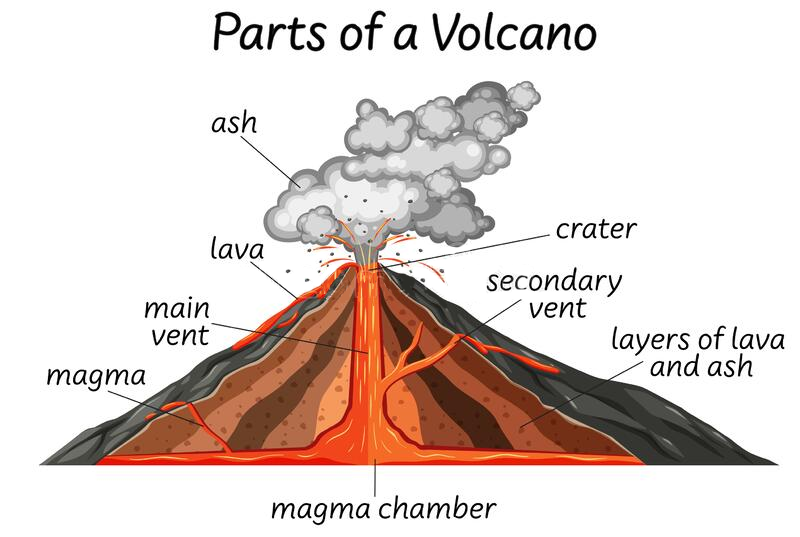
- When this material escapes, it causes an eruption. An eruption can be explosive, sending material high into the sky. Or it can be calmer, with gentle flows of material.
- On Earth, the erupted material can be liquid rock ("lava" when it's on the surface, "magma" when it's underground), ash, cinders, and/or gas.
- A volcano is an opening on the surface of a planet or moon that allows material warmer than its surroundings to escape from its interior.
- Reasons for Magma Rise:
- Magma can rise when pieces of Earth's crust called tectonic plates slowly move away from each other. The magma rises to fill in the space. When this happens, underwater volcanoes can form.
- Magma also rises when these tectonic plates move toward each other. When this happens, part of Earth's crust can be forced deep into its interior. The high heat and pressure cause the crust to melt and rise as magma.
- The final way that magma rises is over hot spots. Hot spots are the hot areas inside of Earth. These areas heat up magma. The magma becomes less dense. When it is less dense it rises. Each of the reasons for rising magma are a bit different, but each can form volcanoes.
- Types:
- Shield volcanoes:
- A volcano produces low viscosity, runny lava, it spreads far from the source and forms a volcano with gentle slopes.
- Most shield volcanoes are formed from fluid, basaltic lava flows.
- Stratovolcano:
- Lava dome:
- The Soufrière Hills volcano, on the Caribbean island of Montserrat, is well known for its lava dome complex at the summit of the volcano, which has gone through phases of growth and collapse. As viscous lava is not very fluid, it cannot flow away from the vent easily when it is extruded. Instead it piles up on top of the vent forming a large, dome-shaped mass of material.

- The Soufrière Hills volcano, on the Caribbean island of Montserrat, is well known for its lava dome complex at the summit of the volcano, which has gone through phases of growth and collapse. As viscous lava is not very fluid, it cannot flow away from the vent easily when it is extruded. Instead it piles up on top of the vent forming a large, dome-shaped mass of material.
- Caldera:
- Shield volcanoes:
What about the Volcanoes in India?
- Barren Island, Andaman Islands (India's only active volcano)
- Narcondam, Andaman Islands
- Baratang, Andaman Islands
- Deccan Traps, Maharashtra
- Dhinodhar Hills, Gujarat
- Dhosi Hill, Haryana
UPSC Civil Services Examination, Previous Year Questions (PYQs)
Prelims
Q. Consider the following statements: (2018)
- The Barren Island volcano is an active volcano located in the Indian territory.
- Barren Island lies about 140 km east of Great Nicobar.
- The last time the Barren Island volcano erupted was in 1991 and it has remained inactive since then.
Which of the statements given above is/are correct?
(a) 1 only
(b) 2 and 3
(c) 3 only
(d) 1 and 3
Ans: (a)
- Barren Island is India’s only active volcano which is located in the Andaman and Nicobar Islands. Hence, statement 1 is correct.
- It is located at about 140 km from Port Blair, southern part of Andaman Island in Andaman Sea. The distance between Barren Island to Great Nicobar is more than the given distance. Hence, statement 2 is not correct.
- First recorded eruption of the volcano dates back to 1787. In the past 100 years, it has erupted at least five times. Then for the next 100 years, it remained silent. It re-erupted massively in 1991. Since then, the eruption has been recorded every two-three years; the latest in the series was February 2016. Hence, statement 3 is not correct. Therefore, option (a) is the correct answer.
Mains
Q. Mention the global occurrence of volcanic eruptions in 2021 and their impact on regional environment. (2021)


Important Facts For Prelims
FEMA & PMLA
Why in News?
The Directorate of Enforcement (ED) has registered 14,143 cases under FEMA and PMLA between 2019-20 and 2021-22 as compared to 4,913 cases in 2014-15 to 2016-17.
- Year 2021-22 saw the highest number of money laundering and foreign exchange violation cases.
What is Foreign Exchange Management Act, 1999?
- The legal framework for the administration of foreign exchange transactions in India is provided by the Foreign Exchange Management Act, 1999.
- Under the FEMA, which came into force with effect from 1st June 2000, all transactions involving foreign exchange have been classified either as capital or current account transactions.
- Current Account Transactions:
- All transactions undertaken by a resident that do not alter his / her assets or liabilities, including contingent liabilities, outside India are current account transactions.
- Example: payment in connection with foreign trade, expenses in connection with foreign travel, education etc.
- All transactions undertaken by a resident that do not alter his / her assets or liabilities, including contingent liabilities, outside India are current account transactions.
- Capital Account Transactions:
- It includes those transactions which are undertaken by a resident of India such that his/her assets or liabilities outside India are altered (either increased or decreased).
- Example: investment in foreign securities, acquisition of immovable property outside India etc.
- It includes those transactions which are undertaken by a resident of India such that his/her assets or liabilities outside India are altered (either increased or decreased).
- Current Account Transactions:
- Resident Indians:
- A 'person resident in India' is defined in Section 2(v) of FEMA, 1999 as:
- Barring few exceptions, a person residing in India for more than 182 days during the course of the preceding financial year.
- Any person or body corporate registered or incorporated in India.
- An office, branch or agency in India owned or controlled by a person resident outside India.
- An office, branch or agency outside India owned or controlled by a person resident in India.
- A 'person resident in India' is defined in Section 2(v) of FEMA, 1999 as:
What is the Prevention of Money Laundering Act, 2002?
- It forms the core of the legal framework put in place by India to combat Money Laundering.
- The provisions of this act are applicable to all financial institutions, banks (Including RBI), mutual funds, insurance companies, and their financial intermediaries.
- PMLA (Amendment) Act, 2012:
- Adds the concept of ‘reporting entity’ which would include a banking company, financial institution, intermediary etc.
- PMLA, 2002 levied a fine up to Rs 5 lakh, but the amendment act has removed this upper limit.
- It has provided for provisional attachment and confiscation of property of any person involved in such activities.
UPSC Civil Services Examination, Previous Year Questions (PYQs)
Prelims
Q. Which one of the following groups of items is included in India’s foreign-exchange reserves? (2013)
(a) Foreign-currency assets, Special Drawing Rights (SDRs) and loans from foreign countries
(b) Foreign-currency assets, gold holdings of the RBI and SDRs
(c) Foreign-currency assets, loans from the World Bank and SDRs
(d) Foreign-currency assets, gold holdings of the RBI and loans from the World Bank
Ans: (b)
Explanation:
- Foreign Exchange Reserves are assets kept in reserve by a central bank in foreign currencies.
- According to RBI, Foreign Exchange Reserve in India includes:
- Foreign Currency Assets
- Gold
- SDRs
- Reserve Tranche Position with IMF
- Therefore, option (b) is the correct answer.
Mains
Q. Discuss how emerging technologies and globalisation contribute to money laundering. Elaborate measures to tackle the problem of money laundering both at national and international levels. (2021)
Q. India’s proximity to the two of the world’s biggest illicit opium-growing states has enhanced her internal security concerns. Explain the linkages between drug trafficking and other illicit activities such as gunrunning, money laundering and human trafficking. What counter-measures should be taken to prevent the same? (2018)


Important Facts For Prelims
Monarch Butterflies
Why in News?
Recently, migratory monarch butterflies have been declared endangered in the International Union for Conservation of Nature (IUCN) Red List of threatened species.
What do we know about Monarch Butterfly?
- About:
- It's a sub-species of the Danaus plexippus butterfly that travels around 4,000 kilometres across America.
- It’s the most recognizable butterfly species that are essential pollinators and further provides various ecosystem services such as maintaining the global food web.
- A smaller population of the species is also found in countries like Australia, Hawaii, and India.
- Issues:
- Their population in the continent has declined 23-72% over the last decade.
- The population of the eastern monarchs that migrate from the eastern United States and Canada — the bigger group — also shrunk by 84% from 1996-2014.
- They follow a unique lifestyle as they breed in only one particular plant The Milkweeds, but the removal of this plant by farmers led to their decrease in population.
- Further, farmers also widely use a weedicide for the removal of milkweeds.
- Weedicide are known as the weed killers or pesticides that are used to kill unwanted plants
- Further, farmers also widely use a weedicide for the removal of milkweeds.
- Legal and illegal logging and deforestation make space for agriculture and urban development, which causes habitat destruction.
- Frequent storms and droughts are more intense and disrupt flowering cycles, which led to the killing millions of butterflies.
What is IUCN?
- The International Union for Conservation of Nature (IUCN) is a global environmental organization that works for the conservation of biodiversity.
- It also supports and participates in environmental scientific research, promotes and helps implement national conservation legislation, policies, and practices, and operates or manages thousands of field projects worldwide.
- Its membership includes more than 1,000 governmental and non-governmental organizations from more than 140 countries.
- It maintains the IUCN Red List of Threatened Species, a comprehensive assessment of the current risk of extinction of thousands of plant and animal species.
- The IUCN has been granted observer status at the United Nations General Assembly.
- The IUCN Red List Categories define the extinction risk of species assessed. Nine categories extend from
- NE (Not Evaluated) to EX (Extinct).
- Critically Endangered (CR), Endangered (EN) and Vulnerable (VU) species are considered to be threatened with extinction.
UPSC Civil Services Examination Previous Year Question (PYQ)
Q. Which one of the following groups of animals belongs to the category of endangered species? (2012)
(a) Great Indian Bustard, Musk Deer, Red Panda and Asiatic Wild Ass
(b) Kashmir Stag, Cheetal, Blue Bull and Great Indian Bustard
(c) Snow Leopard, Swamp Deer, Rhesus Monkey and Saras (Crane)
(d) Lion-tailed Macaque, Blue Bull, Hanuman Langur and Cheetal
Ans: (a)
Exp:
- A Critically Endangered species is one that is likely to extinct. The International Union for Conservation of Nature (IUCN) Red List is a critical indicator of the health of the world’s biodiversity.
- Note: As per 2012 data, option (a) was correct.


Biodiversity & Environment
Snow Leopard
For Prelims: Snow Leopard
For Mains: Conservation
Why in News?
Recently, a study conducted by Zoological Survey of India (ZSI) under National Mission on Himalayan Studies highlighted relation between habitat uses by Snow Leopard, Siberian ibex and blue sheep.
- It aimed at examining how the predator used habitat in presence or absence of its prey species and vice-versa.
What is National Mission on Himalayan Studies?
- It's a Central Sector Grant-in-aid Scheme, therefore, targets to provide much-needed focus, through a holistic understanding of the system's components and their linkages, in addressing the key issues relating to conservation and sustainable management of natural resources in India Himalayan Region (IHR).
- The ultimate goal is to improve the quality of life and maintain ecosystem health of the region to ensure long- term ecological security to the country.
- As the Mission specifically targets the Indian Himalayan Region (IHR), the jurisdiction of NMHS includes 10 Himalayan states fully (i.e., Arunachal Pradesh, Himachal Pradesh, Jammu & Kashmir, Manipur, Meghalaya, Mizoram, Nagaland, Sikkim, Tripura and Uttarakhand) and two states partially (i.e., hill districts of Assam and West Bengal).
- Goals include:
- Foster conservation and sustainable management of natural resources;
- Enhance supplementary and/or alternative livelihoods and overall economic well-being of the region;
- Control and prevent pollution in the region;
- Foster increased/augmented human and institutional capacities and the knowledge and policy environment in the region; and
- Strengthen, greening, and fostering development of climate-resilient core infrastructure and basic services assets.
What were Key Highlights of the Study?
- It was found that, the likelihood of detecting a snow leopard was increased if the place was utilised by its prey species, ibex and blue sheep.
- In the case of prey species, the probability of detection was low when the predator (snow leopard) was present and observed.
- Further both species were less likely to detect together than expected.
- According to the study, habitat variables such barren area, grassland, aspect, slope, and distance to water were major drivers of habitat use for both the snow leopard and its prey species.
- Predators such as snow leopards regulated the populations of herbivores such as blue sheep and Siberian ibex in the mountains, protecting the health of grasslands.
- A long-term absence of snow leopards could cause trophic cascades as unregulated populations would likely increase, depleting vegetation cover.
- Knowledge of the species' interactions will be beneficial in building better conservation and management plans for the long-term sustainability of the snow leopard and its prey species in the Spiti Valley ecosystem.
What is Snow Leopard?
- About:
- Scientific Name: Panthera uncia
- Top Predator: Snow leopards act as an indicator of the health of the mountain ecosystem in which they live, due to their position as the top predator in the food web.
- Protection Status:
- IUCN List of Threatened Species: Vulnerable.
- CITES: Appendix I.
- Indian Wildlife (Protection) Act, 1972: Schedule-I.
- Habitat:
- They have a vast but fragmented distribution across the mountainous landscape of central Asia, which covers different parts of the Himalayas such as Ladakh, Himachal Pradesh, Uttarakhand, and Sikkim.
- Threat:
- Largely threatened because of the loss of natural prey species, retaliatory killing due to conflict with humans and illegal trade of its fur and bones.
What are the Indian Initiatives?
- The Government of India has identified the snow leopard as a flagship species for the high-altitude Himalayas.
- India is also party to the Global Snow Leopard and Ecosystem Protection (GSLEP) Programme since 2013.
- HimalSanrakshak: It is a community volunteer programme, to protect snow leopards, launched in October 2020.
- In 2019, First National Protocol was also launched on Snow Leopard Population Assessment which has been very useful for monitoring populations.
- SECURE Himalaya: Global Environment Facility (GEF)-United Nations Development Programme (UNDP) funded the project on conservation of high altitude biodiversity and reducing the dependency of local communities on the natural ecosystem.
- Project Snow Leopard (PSL): It was launched in 2009 to promote an inclusive and participatory approach to conserve snow leopards and their habitat.
- Snow Leopard is on the list of 21 critically endangered species for the recovery programme of the Ministry of Environment Forest & Climate Change.
- Snow Leopard conservation breeding programme is undertaken at Padmaja Naidu Himalayan Zoological Park, Darjeeling, West Bengal.
UPSC Civil Services Examination Previous Year Question (PYQ)
Q. Consider the following: (2012)
- Black-necked crane
- Cheetah
- Flying squirrel
- Snow leopard
Which of the above are naturally found in India?
(a) 1, 2 and 3 only
(b) 1, 3 and 4 only
(c) 2 and 4 only
(d) 1, 2, 3 and 4
Ans: (b)
Exp:
- Black-necked crane is commonly found in Tibetan and trans-Himalayan region. In winters they migrate to less colder regions of Indian Himalayas. It has been evaluated as Near Threatened in IUCN list. Hence, 1 is correct.
- Cheetah is an extinct species in India. They have gone extinct during the pre-independence era mainly due to hunting. By the beginning of the twentieth century, the species was already heading for extinction in many areas. The last physical evidence of the Asiatic cheetah in India was in 1947, in Eastern Madhya Pradesh or Northern Chhattisgarh. It has been evaluated as vulnerable in IUCN list. Hence, 2 is not correct.
- Flying Squirrels are found in Western Ghats, Northeast and other Indian forests. It has been evaluated as least concern in IUCN list. Hence, 3 is correct.
- Snow leopard, listed as vulnerable in IUCN list, is found in the Himalayan ranges. Hence, 4 is correct. Therefore, option (b) is the correct answer.


Important Facts For Prelims
Kargil Vijay Diwas
Why in News?
The 23rd anniversary of Kargil Vijay Diwas is being observed on the 26th of July 2022.
- The day is dedicated to the martyred soldiers of the Kargil war.
What do we know about the Kargil War?
- About:
- After the Indo-Pak war of 1971, there had been many military conflicts.
- Both the countries conducted nuclear tests in 1998 which further escalated tensions and finally the Kargil War in 1999.
- Kargil War, also known as the Kargil conflict, was fought between May-July of 1999 in the Kargil (now a district in the UT of Ladakh) district of Jammu and Kashmir along the Line of Control (LoC) in which India got the victory.
- After the Indo-Pak war of 1971, there had been many military conflicts.
- Operation Vijay:
- In the year 1999, India and Pakistan signed the Lahore Agreement to mutually resolve the Kashmir issue in a peaceful manner.
- However, the Pakistani troops began infiltrating toward the Indian side of the Line of Control (LoC) under Operation Badr, hoping to cut off Indian Troops in Siachen.
- The Indian Army responded by launching Operation Vijay.
- On 3rd May 1999, Pakistan started this war when it had infiltrated into the high altitudes in the rocky mountainous region of Kargil with around 5,000 soldiers and captured it.
- When the Indian Government got the information about it, ‘Operation Vijay’ was launched by the Indian army to throw back the intruders who had treacherously occupied Indian Territory.
What is the National War Memorial?
- Inaugurated in 2019, it is around 400 meters from India Gate.
- The layout of the structure comprises four concentric circles, named:
- the "Amar Chakra" or Circle of Immortality.
- the "Veerta Chakra" or Circle of Bravery.
- the "Tyag Chakra" or Circle of Sacrifice.
- the "Rakshak Chakra" or Circle of Protection.
- The proposal for a National War Memorial was first made in the 1960s.
- The memorial is dedicated to soldiers who laid down their lives defending the nation during:
- Sino-Indian war in 1962
- Indo-Pak wars in 1947, 1965 and 1971
- Indian Peace Keeping Force Operations in Sri Lanka 1987-90
- Kargil Conflict in 1999.
- The National War Memorial also commemorates the soldiers who participated and made supreme sacrifices in United Nations peace-keeping missions, Humanitarian Assistance Disaster Relief (HADR) operations, counterinsurgency operations and Low-Intensity Conflict Operations (LICO).
UPSC Civil Services Examination, Previous Year Questions (PYQs)
Q. Analyze the circumstances that led to the Tashkent Agreement in 1966. Discuss the highlights of the Agreement. (2013)



